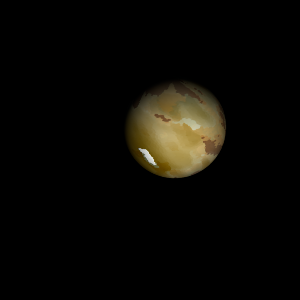|
|
Space Astro
|
Info for exoplanet "Shabo-i"
| Scientific (actual) data |
|---|
| Name | Kepler-1679 b |
| Planet status | Confirmed |
| Radius | 0.185 |
| Orbital period | 9.75376 |
| Semi major axis | 0.0892 |
| Inclination | 88.24 |
| Discovered | 2020 |
| Updated | 2021-02-05 |
| Tzero tr | 2454970 |
| Impact parameter | 0.6801 |
| Temperature (kelvin) | 813 |
| Publication | Announced on a website |
| Detection type | Primary Transit |
| Alternate names | 2MASS J19353613+5025373 b, K02106.01, KIC 12017109 b, KOI-2106 b, KOI-2106.01, WISE J193536.15+502537.3 b |
| Star name | Kepler-1679 |
| Right ascension | 293.9° |
| Declination | 50.43° |
| Mag i | 14.943 |
| Mag j | 13.898 |
| Mag h | 13.582 |
| Mag k | 13.528 |
| Star distance | 932.63 |
| Star metallicity | -0.04 |
| Star mass | 0.996 |
| Star radius | 0.9 |
| Star temperature | 5358.25 |
| Star alternate names | 12017109, 2MASS J19353613+5025373, KIC 12017109, KOI-2106, WISE J193536.15+502537.3 |
| Wikipedia article | Kepler-1679 b |
Back
| |
| Fictional info (?) |
|---|
| Suggested name | Shabo-i |
| Planet type | Warm planet |
| As seen from Kepler-1679, in a frame of reference that rotates with the orbital motion, it appears to rotate only once every two years. |
| Atmosphere | Hydrogen chloride | 80% |
| Hydrogen | 15% |
| Water vapor | 4% |
| Oxygen | 0.077% |
| Krypton | 3.6E-5% |
| Atmospheric pressure | 17 bar |
 |
| Moon | Guchi Gura'mo | Large round ice comet |
| Kuya | Huge almost round rocky asteroid |
| Google search for Shabo-i |
|
Website by Joachim Michaelis
|
|
|
|